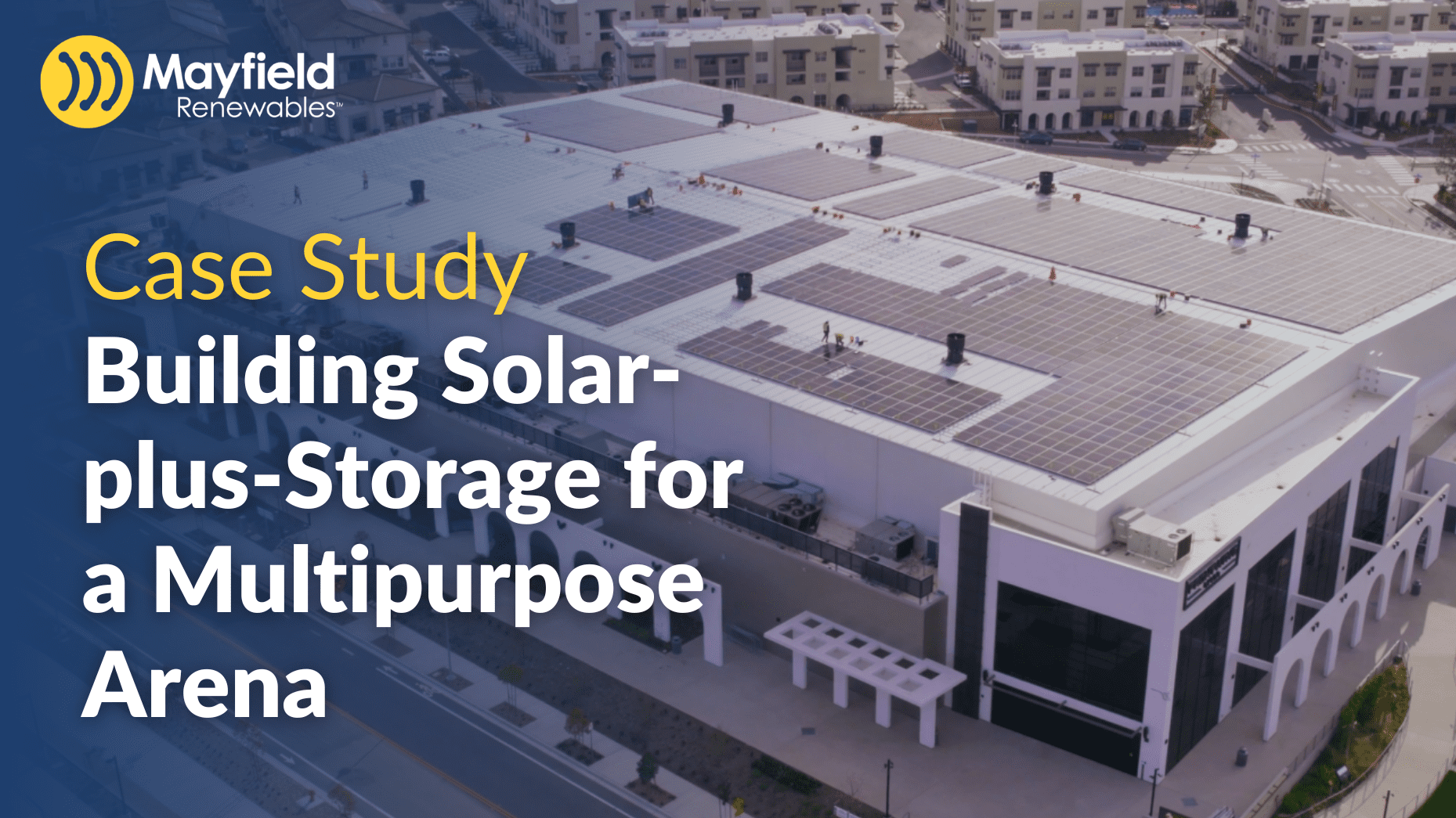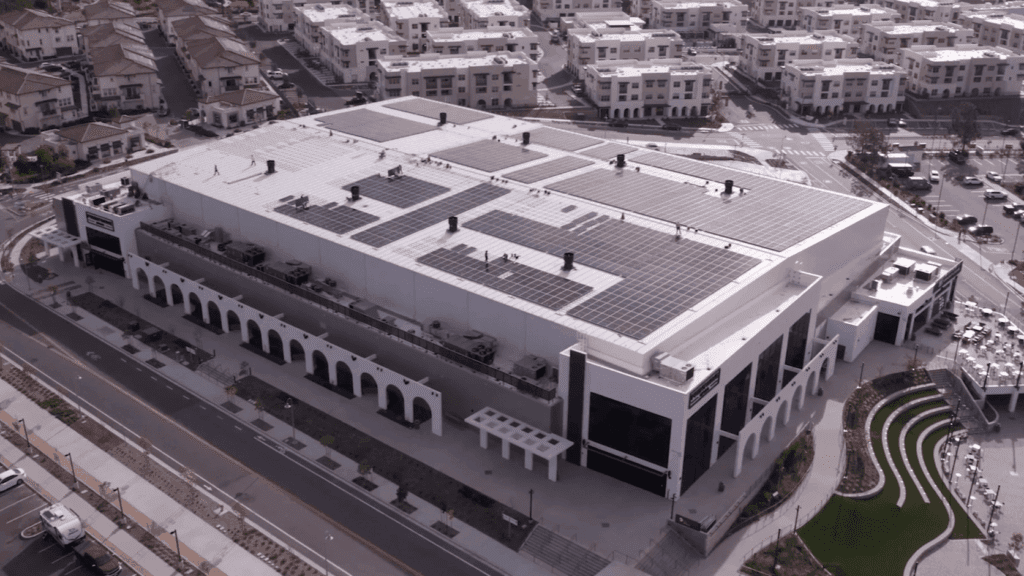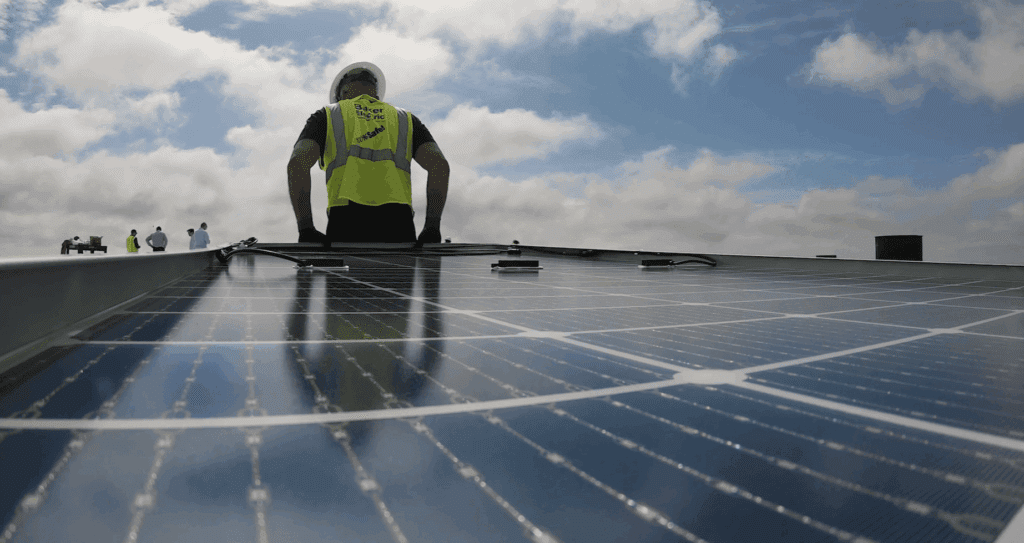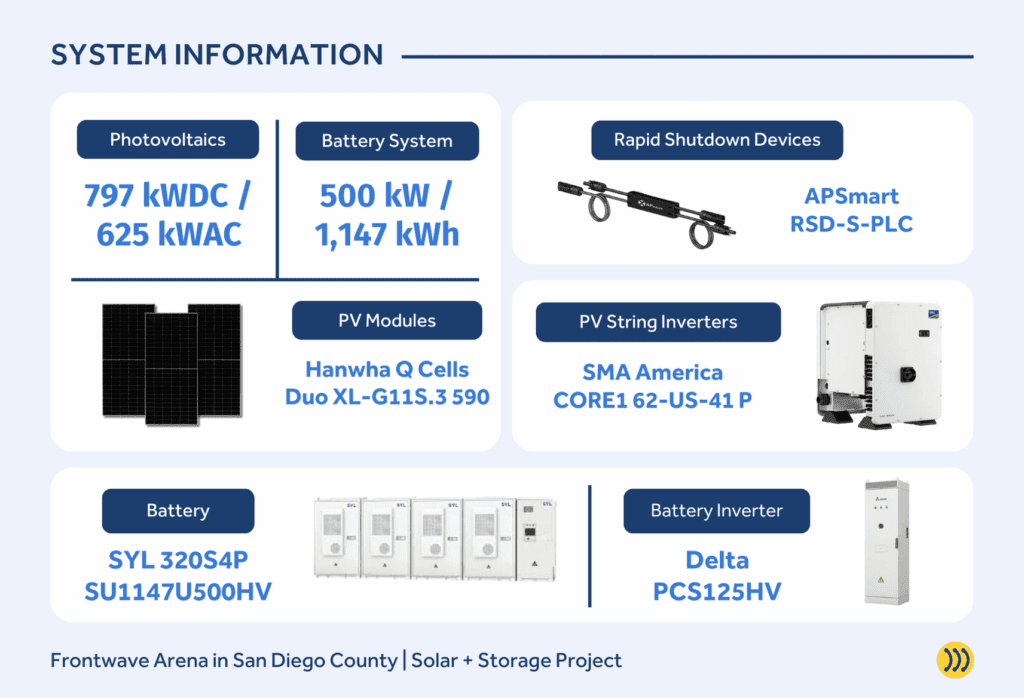
Technical Article
Case Study: Building Solar-plus-Storage for a Multipurpose Arena


When you’re planning a 7,500-seat arena in an area with high electricity rates and a lot of sunshine, it’s a good idea to start thinking about solar panels and storage systems.
That’s exactly what the team behind Frontwave Arena did when planning their multipurpose entertainment venue in the City of Oceanside, San Diego County. The arena’s specific location in El Corazon, a 465-acre district dedicated to habitat and recreation, led to another goal: Making the building as sustainable as possible.
A large rooftop solar array paired with a sizable energy storage system now allows Frontwave Arena to maximize the economic value of solar and operate sustainably — all while ensuring a great fan experience for everyone attending San Diego Sockers and Clippers home games, as well as concerts and community events. Here’s how they did it:
One Project, Multiple Partners
Building a solar-plus-storage system takes a village: This system is owned and operated by DSD Renewables through a power purchase agreement (PPA) with Frontwave Arena. At the project’s onset in 2023, DSD hired Baker Electric as the project EPC (overseeing engineering, procurement, and construction) and Mayfield Renewables as the electrical engineer of record.
In turn, Mayfield collaborated with each stakeholder, as well as San Diego Gas & Electric (the local utility) and the City of Oceanside (the authority having jurisdiction, AHJ) to develop a plan set and provide electrical PE stamps.

Project Goals
Given the geographic advantages of the sunny location and the economic constraints of high utility rates, Frontwave’s management team had three goals in mind:
- Maximize the value of solar: Net Metering 3.0 has drastically reduced the value of solar exports in California. So instead of selling excess solar electricity to the grid for very little return, it made more financial sense to store that excess power in a battery and use it later.
- Reduce demand for grid power: Grid electricity can be a major expense for commercial facilities. Frontwave wanted to fill the available roof space with solar modules to produce as much “local” electricity as possible. Since DSD Renewables owns and operates the system through a PPA, Frontwave pays a known, locked-in amount for its solar electricity.
- Reduce demand charges: San Diego Gas & Electric has some of the highest demand charges in the entire U.S. for the period between 4:00 and 9:00 pm. Frontwave opted to limit its peak grid demand by discharging its batteries (which are charged from solar electricity produced earlier in the day) during that window.

Project Hurdles
As with any commercial-scale project, and particularly for a new-construction building, engineering challenges emerged throughout the development process. Mayfield solved these through collaboration with other stakeholders and strategic value engineering.
Here are four major hurdles that the project presented, and how Mayfield cleared them:
- Limited physical space: The electrical courtyard (dedicated outdoor space for electrical equipment such as the utility transformer and facility main service panel) was crowded.
Mayfield worked with the energy storage system manufacturer to gather 9540A test report data, which the AHJ used to allow reduced spacing between the battery and other electrical equipment in the courtyard. - Rapid shutdown compliance: National Electrical Code Section 690.12 requires rapid shutdown functionality for rooftop systems.
To comply with the Code, Mayfield selected APSmart RSD-S-PLC module-level rapid shutdown devices and ran inverter conductors 6”-8” apart to avoid power line communication crosstalk. - Multiple key stakeholders: DSD Renewables owns and operates the project under a PPA, Baker Electric constructed and permitted the project, and Mayfield engineered the project. All parties accommodated requirements from Frontwave Arena, the local utility, and the AHJ.
Mayfield coordinated with all stakeholders and submitted plans for multiple rounds of revisions to ensure all viewpoints were considered. - Designing a system for a new building: The solar-plus-storage system was designed for a building that was currently under construction, so there weren’t any “as-built” drawings to pull from. There also wasn't any historical electrical load data Mayfield could use to size the solar array and energy storage container.
Mayfield and Baker Electric worked with Frontwave Arena to estimate electrical loads to size the energy storage system and PV array.
Results
Following multiple rounds of reviews and revisions with the City of Oceanside, San Diego Gas & Electric, and DSD Renewables, Baker Electric successfully obtained a permit on October 15, 2024, and began construction in December.
As of this writing, the project has been commissioned and is going through final inspections. Energization is anticipated in May 2025.
Mayfield Renewables is an engineering consultancy specializing in commercial and industrial PV and microgrid engineering. Contact us today for a consultation.


